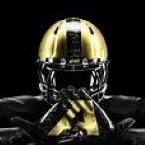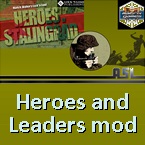asl3d
Posts: 6531
Joined: 2/6/2017
Status: offline

|
44 Italian Autosahariana AS 42 T20L
The SPA-Viberti AS.42 Sahariana, or Camionetta Desertica Model 42 (AS stands for Autosahariana) was derived from the AB 41 armored car including its four-wheel steering, but with a 2x4 transmission specifically for desert operations but, unlike the latter, was unarmored and lacked a rear driving position. Designed specifically for long-range reconnaissance in North Africa, it had an excellent cross-country range of almost 500 miles. It was also known as the Camionetta Desertica mod. 42 (Desert Weapons Carrier model 1942), and was nicknamed la Sahariana (the Saharan). The 100 horsepower SPA ABM 3 6 cylinder petrol engine was located in the rear which gave enough space in the middle of the hull to accommodate up to five fully equipped men and weapons, though the mission crew seldom exceeded three or four. The open compartment's only overhead protection was a waterproof canvas sheet. Besides the driver’s seat, the crew that served the on board weapons were seated on four folding seats on the sides. The AS 42 had internal fuel tanks of 145 litres with an additional 20 jerrycans externally mounted on both sides between the wheels plus 4 on the front fenders, holding a total of 80 litres of water and 400 litres of fuel. A full fuel tank and the additional fuel canisters allowed a maximum range of 1,500 km.
The Autosahariana was a specialized towing vehicle for artillery pieces, Italian leaders considered it a valuable asset in mobile situations. It has, however, two real drawbacks—a low infantry transport capacity, and a speed not too high (making off-road travel, with or without a gun in tow, was a slow proposition). Due to these limitations, beyond providing a tow for any on-board guns, many times it was used to transport infantry teams (HS/crews) and their heavy SW (dismantled HMGs or MTRs).
AS 42 saw action in North Africa, Sicily and Italy. Its low profile allowed it to hide behind the dunes and wait for the arrival of the enemy unseen, and its great capacity for autonomous action allowed it to chase enemy forces for long periods. After the armistice some were used by the Fascist Italians, and by the Germans (including on the Eastern Front and in the Battle of the Bulge). In all, about 200 were built.

 Attachment (1) Attachment (1)
_____________________________
Semper fidelis
|
 Printable Version
Printable Version



























 New Messages
New Messages No New Messages
No New Messages Hot Topic w/ New Messages
Hot Topic w/ New Messages Hot Topic w/o New Messages
Hot Topic w/o New Messages Locked w/ New Messages
Locked w/ New Messages Locked w/o New Messages
Locked w/o New Messages Post New Thread
Post New Thread